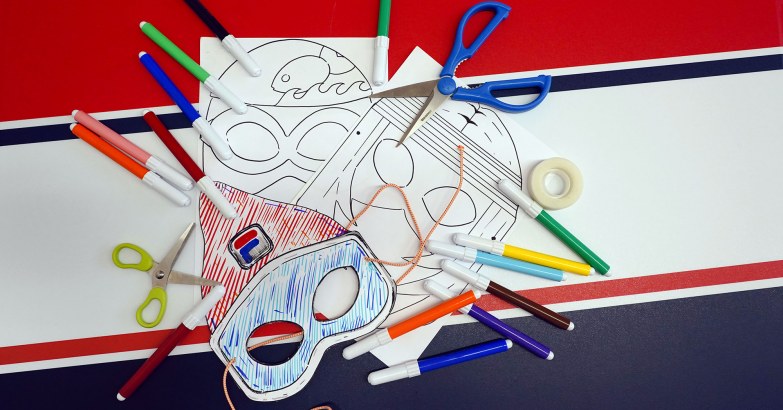MASKS UP!
‘To wear a mask’ isn’t simply a physical action: in everyday language it defines a of moral hiding practice. On the contrary, ‘to take one’s mask off’ is a surrender, the revelation of something that has been kept secret. And ‘Ti conosco, mascherina!’ (‘I know you, little mask!’) is a confidential, joyful exclamation, related to the homonymous movie directed in 1943 by Eduardo De Filippo, able to inspire Italian musicians such as singer Mina and rock band Litfiba.
We can witness traces of handmade artifacts to hide the human face (or part of it) starting from the prehistoric era: they were connected to magical, ritual practices, funerals or battles. The development of arts and crafts, in this sense, is crucial: let’s just think of the social function of theatre in ancient Greece, to understand it better. In 530 BC Tespi, commonly known as the first remarkable dramatist, encouraged actors to wear masks to exaggerate their facial expressions and to improve sound resonance, enabling the audience to perceive emotions in a better way.
During Medieval times we have a further detail. In Venice, during the plague, doctors used to wear masks with a long nose filled with spices, to be protected from the bodies’ smell and the inhalation of air: they were known as apothecary masks. In the 18th century Venice became ‘la Serenissima’, and at the peak of her history as a maritime republic it set up pagan traditions that would become iconic, such as Carnival. Its celebrations were also about luxurious masks: by wearing them, citizens were able to fool the Doge (the republic’s most influential political figure) around.
The symbolic value of mask gets refined and multilayered with the advent of the Masters of modern and contemporary art. Surrealist painter René Magritte used to cover up faces with fabrics, bowler hats and enigmatic green apples. In his masterpiece ‘The Scream’ (1893–1910), on the other hand, Edvard Munch froze – in the most complete and complex way – the fear of his times with a defleshed, skull-like face. Pablo Picasso got inspired by African tribal masks to draw the edges of his cubist portraits; Giorgio De Chirico, inventor of the scuola metafisica art movement, painted human beings as mannequins, and by taking expressions away he was definitely aligned with the psychoanalytical theories of his time.
Next Friday, February 10, we will treasure these experiences at our museum with Su la maschera! (‘Masks Up!’), our special Carnival event. Conceived for the youngest, the activity will be focused on FILA Sport’s iconic looks, along with the concept of clothes as identity ‘suits’. Everything will merge into colorful masks designed, colored and worn by all participants after being inspired by the champions – both female and male – of the FILA tradition. It’s going to be an occasion to witness a unique parade, in which the style of the Messner era meets the glamorous Borg polo shirt stripes…it’s a Carnival you cannot miss!
Back to the articles!Leave a Reply


